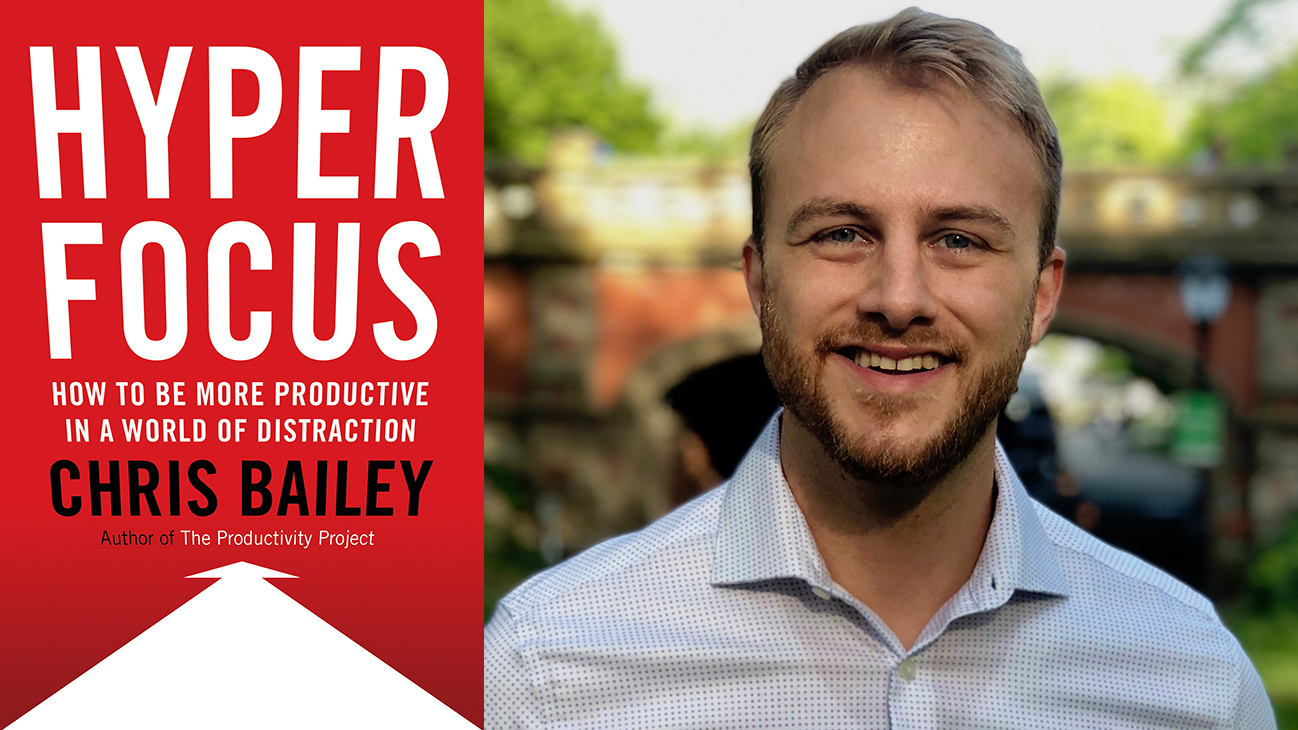Productivity and performance expert Chris Bailey’s new book Hyperfocus: How to Be More Productive in a World of Distraction is the antidote to living in a world filled with distraction and constant stimulation. It explores two modes of focus (the key to productivity!) and how to best use them to reclaim your attention and accelerate your productivity.
In this excerpt from Hyperfocus, Chris explains the second, and more controversial, mode of focus — Scatterfocus, the art of letting your mind wander to spark creative thinking.
Introducing Scatterfocus
The second part of this book is devoted to the power of mind wandering and directing your attention inward.
Yes, you heard that right — after encouraging you in the first part of the book to rid yourself of that style of thinking, I’m about to explain the strengths of mind wandering. Part of its bad reputation is warranted: when our intention is to focus, daydreaming can destroy our productivity. But daydreaming is immensely potent when our intention is to solve problems, think more creatively, brainstorm new ideas, or recharge. As far as boosting our creativity is concerned, mind wandering is in a league of its own.
Think back to your last creative insight — chances are you weren’t hyperfocusing on one thing. In fact, you probably weren’t focused on much at all. You may have been taking an extra-long shower, having a walk during a lunch break, visiting a museum, reading a book, or relaxing on the beach with a drink or two. Maybe you were sipping your morning coffee. Then, like a flash of lightning, a brilliant idea struck out of nowhere. Your brain mysteriously chose this moment, when you were resting and recharging, to connect a few of the constellations of dots — let’s consider a “dot” to be any idea or piece of information you remember — swirling in your head.
Just as hyperfocus is your brain’s most productive mode, scatterfocus is its most creative.
Entering scatterfocus mode is easy: you simply let your mind be. Just as you hyperfocus by intentionally directing your attention toward one thing, you scatterfocus by deliberately letting your mind wander. You enter this mode whenever you leave attentional space free around what you’re doing in the moment — whether going for a run, biking, or investing time in anything that doesn’t consume your full attentional space…
The Three Styles of Scatterfocus
In one respect scatterfocus is an odd mental mode to write about, as you need few instructions for how to let your mind wander. While hyperfocusing can be difficult, we already spend 47 percent of our day in something similar to scatterfocus mode without any effort, whenever our focus lapses and our attention wanders.
There are two ways your mind wanders: unintentionally and intentionally. Unintentional wandering takes place without your awareness, when you don’t choose to enter into the mode. This is where I draw the line between mind wandering and scatterfocus. Scatterfocus is always intentional.
It may sound odd to release your grip on your attention intentionally. But in practice, there are other mental states in which you have even less control over your attention — including in hyperfocus.
Two of the most preeminent researchers in the field of mind wandering are Jonathan Smallwood and Jonathan Schooler, and they both agree on this point. When I chatted with him, Smallwood gave the example of watching a movie: “Let’s say you sit down to watch Pulp Fiction. Quentin Tarantino has organized the entire movie to constrain your thoughts. You don’t need to do anything as you watch the film — this is what makes the experience so relaxing. He controls your train of thought.”
Research also suggests that we notice where our mind wanders around half of the time. We don’t work with nearly this much awareness when focused on something. Schooler goes even further than Smallwood, arguing that one of the biggest misconceptions we have about mind wandering today is that “all mind wandering goes on without awareness, without intention.”
Intention is what makes scatterfocus so powerful. This mode is always deployed deliberately — and involves making a concerted effort to notice where your mind goes.
I’ve found it helpful to distinguish among a few different styles of scatterfocus:
- Capture mode: Letting your mind roam freely and capturing whatever comes up.
- Problem-crunching mode: Holding a problem loosely in mind and letting your thoughts wander around it.
- Habitual mode: Engaging in a simple task and capturing the valuable ideas and plans that rise to the surface while doing it. Research has found this mode is the most powerful.
Of the three styles, capture mode is best for identifying what’s on your mind; problem-crunching mode is best for mulling over a specific problem or idea; and habitual mode is best for recharging and connecting the greatest number of ideas.
From HYPERFOCUS by Chris Bailey, published by Viking, an imprint of Penguin Publishing Group, a division of Penguin Random House, LLC. Copyright © 2018 by Chris Bailey.
Called “the most productive man you’d ever hope to meet” by TED Talks, a “productivity mastermind” by Fast Company, and “a quirky and energetic guide through the productivity thicket” by the Harvard Business Review, Chris Bailey transforms how people think about productivity in the workplace and beyond.
His new talk “How to be More Productive in a World of Distraction” is modeled after his new book Hyperfocus, and merges the latest scientific research with practical takeaways on how to focus more deeply and transform how you think about and manage your attention on a daily basis.
Interested in learning more about Chris and what he can bring to your next event? Email us at [email protected].




